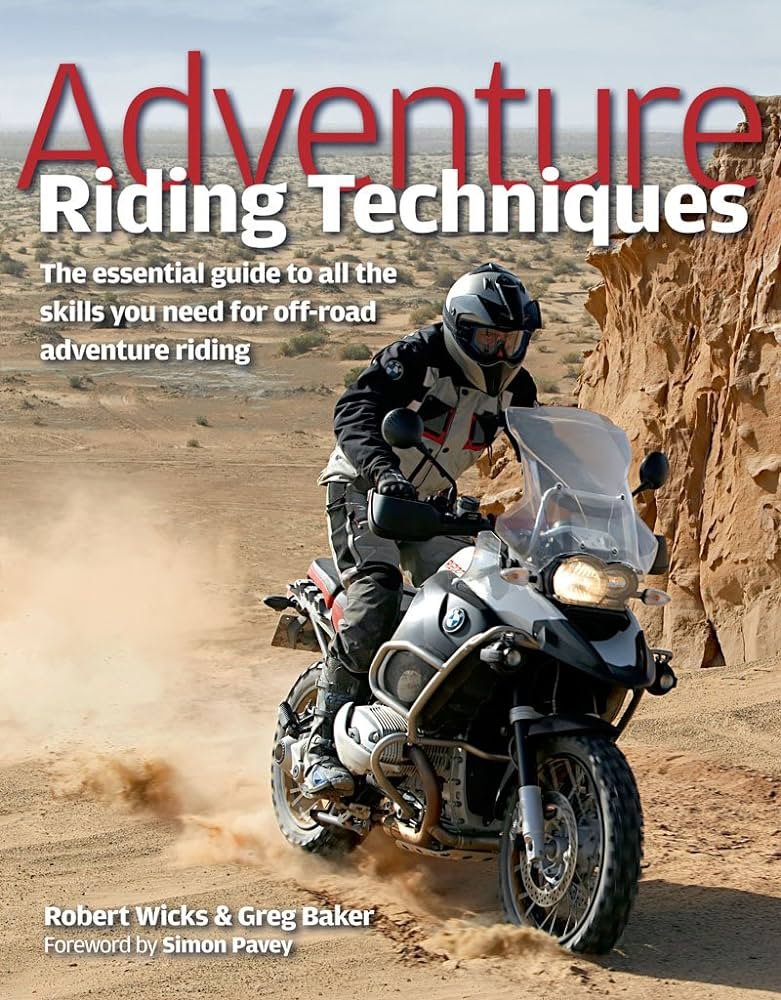Off-roading is an adventurous outdoor activity that involves driving through rugged, unpaved terrain. It tests both driver skill and vehicle capability.
Engaging in off-roading requires a solid understanding of driving techniques, safety measures, and respect for the environment. You’ll need a capable vehicle, ideally a 4×4 or an ATV, equipped with special features such as high ground clearance and all-terrain tires.
Preparing for the unpredictable nature of the trails is crucial; hence, always pack recovery gear and emergency supplies. A successful off-road adventure balances the thrill of conquering challenging landscapes with a commitment to responsible trail use and vehicle maintenance. Whether you’re tackling mud, sand, snow, or rocks, this guide ensures you’re well-equipped for the wild and the unexpected. With the right approach and preparation, off-roading can offer an exhilarating escape into nature’s toughest terrains.

Credit: www.tires-easy.com
Essential Off-roading Gear List
Embarking on an off-road adventure requires the right gear to tackle tough terrain with confidence. Essential items such as recovery boards and a robust winch can prove invaluable when navigating through challenging conditions. They provide the necessary traction and pulling power needed to rescue your vehicle from mud, sand, or snow.
Differential lockers enhance traction by ensuring equal wheel spin, while air compressors make quick work of adjusting tire pressure to suit varying off-road surfaces. Tire selection is also critical; choosing the right all-terrain or mud-terrain tires can be the difference between conquering obstacles and being stuck.
For lifting and maneuvering in tight spots, a high-lift jack is indispensable, coupled with a sturdy shovel for clearing debris or building ramps. Lastly, a comprehensive tool kit and spare parts, such as fuses, hoses, and belts, ensure minor repairs don’t end your journey prematurely. Being prepared can mean the difference between a successful excursion and a stranded vehicle.
Navigational Aids For Unknown Terrain
Navigating unknown terrain requires reliable tools, and off-roaders must choose between GPS devices and traditional maps. GPS devices offer real-time location tracking and come packed with features like topographic details, landmarks, and path suggestions, which are essential for any off-road adventure. In contrast, traditional maps provide a dependable, battery-free alternative that can be invaluable when devices fail, making them a necessary backup.
Off-road enthusiasts should leverage apps with offline features to ensure access to navigation information without depending on cellular service. Downloading maps beforehand allows adventurers to focus on the landscape without worrying about signal availability. Furthermore, effective communication is key. Employing walkie-talkies enables groups to stay in touch over distances where mobile phones may not reach, ensuring safety and coordination during the journey.
| Navigation Aid | Advantages | Considerations |
|---|---|---|
| GPS Devices | Real-time tracking, detailed maps, route suggestions | Dependent on battery and satellite signals |
| Traditional Maps | No battery required, reliable backup | Lesser detail, no real-time tracking |
| Apps with Offline Features | Accessible without cellular service | Requires prior downloading of maps |
| Walkie-Talkies | Effective over areas without cell reception | Limited range compared to mobile phones |
Personal Safety Equipment
Ensuring your safety should be the top priority during any off-road adventure. Equip yourself with a comprehensive first-aid kit that includes bandages, antiseptics, pain relievers, and wound dressings. CPR supplies and splints can be invaluable in the event of serious injuries. Adapt your wardrobe to face any environmental challenges with weather-appropriate clothing. This includes moisture-wicking layers for heat and insulation for cold conditions.
Never underestimate the importance of hydration and food supplies. Carry enough water for each person and pack nutrient-rich, non-perishable snacks to maintain energy levels. Emergency signaling devices, such as flares, whistles, and reflective gear, are essential to alert rescuers to your location if the need arises. Each item plays a critical role in ensuring your well-being beyond the beaten path.
Driving Through Challenging Obstacles
Water crossings require careful planning. Ensure your vehicle’s depth capabilities are adequate and check the water’s flow before entering. Create a steady pace, forming a bow wave to keep water from the engine bay. Prior to any water crossing, inspect for hazards and walk the route when possible.
Rock crawls present a unique challenge. Engage low gears and maintain control with slow and deliberate movements. Choose a path to minimize undercarriage damage and keep all four wheels on the ground for maximum stability. Focus on tire placement, leveraging the vehicle’s torque to navigate over obstacles smoothly.
Sand driving necessitates reduced tire pressure for increased traction. Avoid sudden turns and maintain momentum. Do not brake abruptly; instead, gently decelerate to prevent getting stuck. If your vehicle begins to bog down, ease off the throttle and steer straight until you regain control.
Tackling Steep Inclines And Declines
Before attempting any steep inclines or declines while off-roading, it’s crucial to assess the path’s difficulty. Terrain can vary greatly, and understanding the slope’s angle, surface conditions, and potential obstacles is essential. A proper assessment ensures that both the driver and the vehicle can handle the challenge safely.
For success, consider the approach angle: the maximum angle at which a vehicle can approach a slope without making contact with the ground. 4×4 vehicles often have better approach angles due to elevated designs, allowing them to tackle steeper terrain without damaging the undercarriage.
Effective throttle and brake control are paramount. Maintaining a steady speed with minimal throttle manipulation provides better traction and vehicle stability. During declines, it’s important to use the engine’s braking capability by engaging a lower gear, allowing for a controlled descent without over-relying on the brakes, which could lead to skidding or loss of control.
Recovery Methods When Stuck
Winching requires strict adherence to safety protocols to ensure effective recovery without accidents. Be sure your winch cable is free of damage and that the rig is securely anchored before beginning. Always wear gloves and keep spectators at a safe distance. Similarly, recovery boards offer traction and must be positioned correctly under the tires for maximum efficiency. These boards are essential on soft terrain to prevent further sinking.
Should your vehicle become entrenched, digging out is a hands-on technique that might save the day. With a sturdy shovel, clear mud, sand, or snow from around the tires, creating a path for movement. Clearance front and rear is just as crucial for vehicle mobility as traction beneath the tires.
Pre-trip Vehicle Inspection Checklist
Ensuring your vehicle is mechanically sound before embarking on an off-road adventure is critical for a safe and enjoyable experience. Perform thorough engine and fluid checks, which include examining the oil, coolant, brake, and transmission fluids for proper levels and any signs of contamination.
Next, focusing attention on tire pressure and tread is paramount. Confirm that the tires are inflated to the manufacturer’s recommended levels to optimize traction and control. The tread depth is also essential; it should be checked to ensure it meets safety standards, providing the necessary grip on challenging terrains.
Lastly, a detailed assessment of your vehicle’s suspension and drivetrain systems must not be overlooked. Verification of the integrity of shocks, struts, and all related components is necessary to maintain stability and handling. Additionally, inspect the drivetrain components for any wear or damage that could compromise vehicle performance.
Understanding Terrain And Weather Impact
Understanding the terrain and weather conditions is crucial for a successful off-roading adventure. Different soil types, from sandy deserts to muddy trails, demand specific preparation and driving adjustments. For instance, sandy terrains require maintaining momentum, while muddy conditions might necessitate the use of lower gears to enhance torque.
Keeping a close eye on the weather forecast can significantly alter your trail experience. Sudden downpours can turn dirt paths into slippery challenges, and high temperatures may affect your vehicle’s performance. Therefore, it’s essential to equip your vehicle with the right tires and gears based on the anticipated conditions to ensure safety and enjoyment on your journey.
Adjusting your driving techniques according to the environment is key to overcoming obstacles off-road. Slow and steady speed is often your ally in rocky terrains, allowing for careful wheel placement. Conversely, in snowy landscapes, maintaining a constant, moderate speed ensures that you do not lose traction. Knowing when to accelerate and when to brake can make all the difference in navigating the path ahead.
Trail Etiquette And Sustainable Practices
Understanding the right-of-way rules is crucial for maintaining safety and harmony on the trails. Traditionally, motorized vehicles yield to bikers, bikers yield to hikers, and everyone yields to horses. Always stay alert and be prepared to stop or move to the side in narrow or blind spots.
It’s essential to minimize environmental impact while off-roading. Stick to established trails to avoid damaging vegetation, and refrain from traversing waterways to prevent ecosystem disruption. Switching off engines when taking breaks can significantly reduce your carbon footprint.
Trail cleanup initiatives play a vital role in conservation efforts. Participate by bringing along a bag to collect trash encountered on your route, not only ensuring cleanliness but also safeguarding wildlife. Such actions contribute to preserving these natural spaces for future generations of off-roading enthusiasts.
Frequently Asked Questions On Off-roading Guide
How Do I Prepare For Off-roading?
To prepare for off-roading, research the terrain, inspect your vehicle, pack emergency gear, check weather conditions, and plan your route carefully.
What Not To Do When Off-roading?
Avoid tackling terrain beyond your skill level and vehicle capability. Do not ignore local laws and off-roading rules. Never go off-roading alone. Always carry essential recovery gear. Refrain from damaging the environment by staying on designated trails.
Do You Really Need 4×4 For Off-roading?
A 4×4 is not mandatory for all off-road situations, but it provides superior traction and off-road capability, making it highly recommended for challenging terrain.
How Do You Start Off-road?
To start off-roading, research suitable locations, get a capable vehicle, learn basic driving techniques, ensure safety by packing essential gear, and follow environmental and trail rules.
Conclusion
Embarking on an off-road adventure requires preparation, respect for nature, and the right gear. Remember, safety comes first; personalize your journey to match your skill level. As you tackle challenging terrains, cherish the thrills and the tranquility of the great outdoors.
Keep exploring, stay equipped, and let the trail be your teacher. Happy off-roading!




